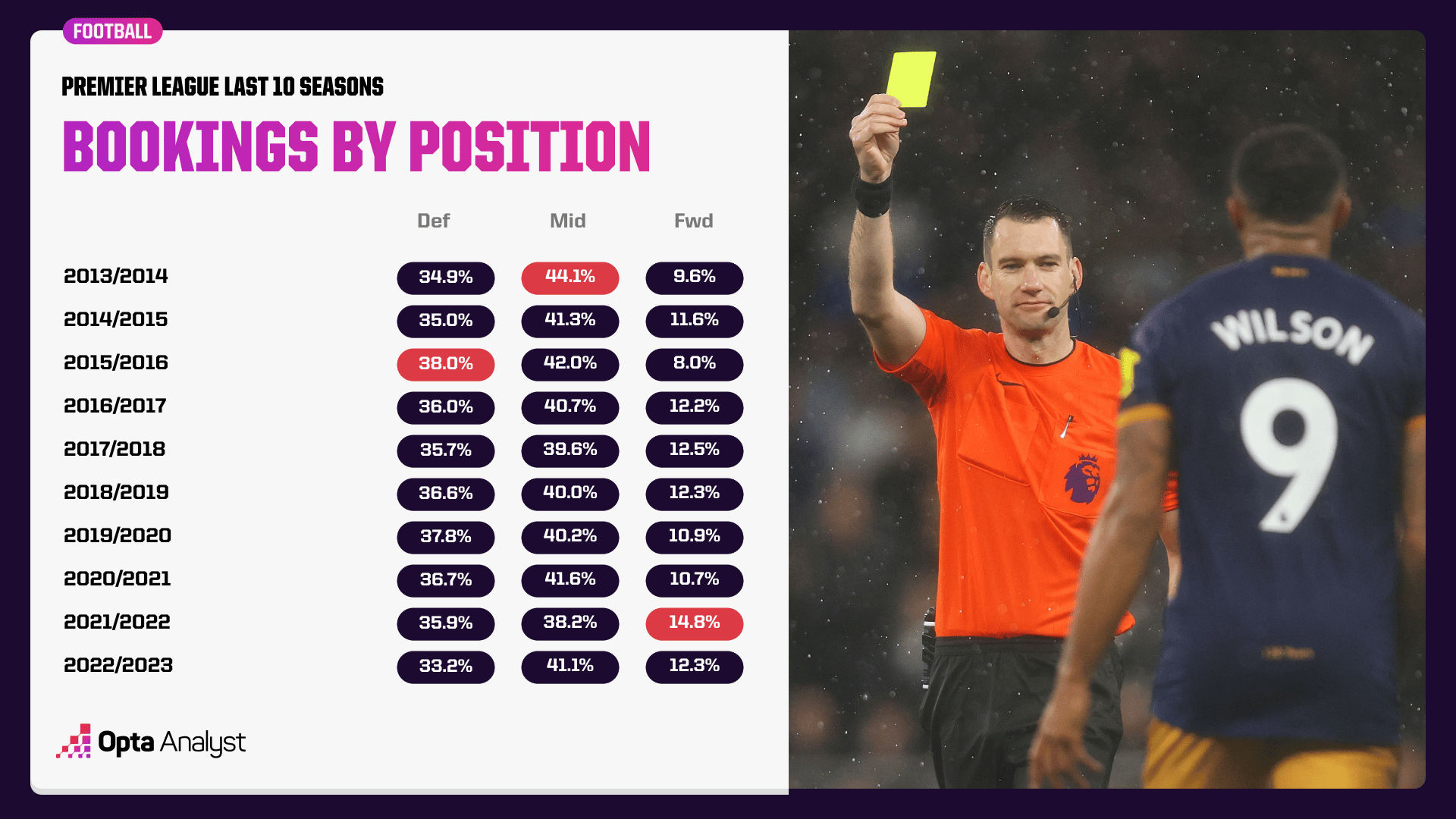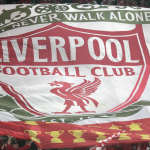
AS we head into the Premier League matchweek nestled closest to Halloween it begs the question: has there been a shift in the position of on-pitch monsters in the top-flight? For a long time English football enjoyed a simple set-up whereby battle-hardened central midfielders would be tasked with the dirtier side of the game, the rough stuff, the tactical foul scene. It’s not spooky to learn that Robbie Savage and Lee Cattermole are among the men to have clocked up a record 14 yellow cards in a single Premier League season, while David Batty once collected three red cards in a single campaign.
But recently something feels a little different, and it’s been highlighted by the fact that players such as Anthony Gordon and James Maddison have both already reached the five bookings mark in 2022-23 (Gordon is already on six). Has the increased sophistication in the Premier League, partly due to the coaching revolution of the mid-2010s, seen the onus on caution-heavy play move further forwards? Are attacking players getting booked more now? Are the forwards the new monsters?
Initial evidence from the 2022-23 numbers suggests that this may well be the case. Dwight McNeil, the Everton winger, has committed two fouls this season and has been booked for both, while Aston Villa’s Danny Ings has three bookings for a foul this season from a total of six fouls conceded. The James Maddison numbers are less conclusive, his five yellows made up of a variety pack of two for fouls, two for dissent and one for simulation. Truly a man for all PGMOL scenarios.
For a broader look at this potential trend it makes sense go back and look at the last 10 Premier League seasons and divide up the yellow cards by position. We’ll exclude goalkeeper and substitute bookings to make this simpler, although had this sample included Jens Lehmann’s career then the eight (8) bookings he collected in 2006-07 would surely demand his inclusion.
The table below certainly supports the theory that forwards are getting booked more. In both 2013-14 and 2015-16 fewer than 10 per cent of yellow cards were shown to players operating as attackers in Premier League games. 2015-16 is significant too, because it’s the season that Jurgen Klopp and his gegenpressing arrived at Liverpool, which was followed by the influx of Euro super-coaches such as Antonio Conte and Pep Guardiola in the summer of 2016. Despite what your uncle claims about pressing existing in the 1980s (“we just called it closing down”), all the relevant metrics show that Premier League football has become faster and more intense in the half decade, and logic dictates that if you press higher up the pitch, the number of bookings shown to forwards will increase.

From 2016-17 until 2018-19 forwards picked up more than 12% of yellow cards in the Premier League. That dipped during the two Covid-affected seasons, perhaps a corollary of the observed reduction in intensity in matches played behind closed doors. We can all remember the sheer excitement of the packed house Brentford versus Arsenal game that opened the 2021-22 campaign and the season that followed saw almost 15% of all Premier League yellow cards shown to forwards, a record high.
So far this season the proportion of attacker yellows is running at about 12.3%, so back at exactly the rate seen in 2018-19, the last full pre-pandemic season. It’s worth noting too that at 3.59 yellow cards per game, the overall rate of bookings this season is currently running at the third highest rate in Premier League history, not a million miles behind the record of 3.69 per game shown in 1998-99 (1,404 in total that term). The standout culprits that season were Mark Hughes with 14 (unsurprising), Olivier Dacourt with 13 (unsurprising) and Paul Gascoigne with 12 (ok, quite surprising).
It’s all a far cry from the first two Premier League seasons in 1992-93 and 1993-94 which saw yellow card rates of 1.72 and 1.41 per game respectively, a level of leniency (and, let’s be honest, low-level violence) that will surely never be seen again. The conclusion we should take, then, is that the chance of seeing a yellow card in a Premier League game has rarely been higher, and that there is an increased chance that it will be brandished in the direction of your team’s most skillful attacking threat. Happy Halloween.



